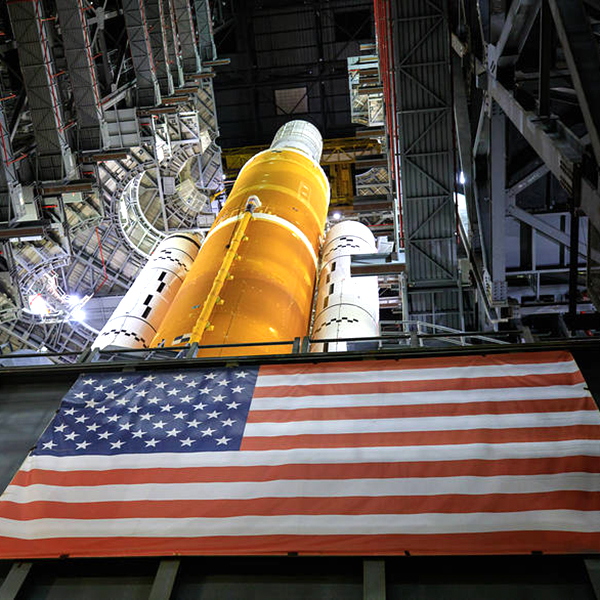Teams Advance Preparations for Crewed Artemis Missions at Kennedy Space Center
By Space Coast Daily // June 13, 2022

BREVARD COUNTY, FLORIDA – While teams continue to prepare for the next wet dress rehearsal attempt ahead of Artemis I, engineers and technicians are making headway preparing for future Artemis missions with astronauts.
The Orion spacecraft for Artemis II, the first crewed Artemis mission, was powered on for the first time by technicians in the Neil Armstrong Operations and Checkout Building at NASA’s Kennedy Space Center in Florida, where teams have been meticulously outfitting the crew module with its environmental control and life support (ECLS) systems and subsystems.
Powering on Orion allows teams to begin verifying power and data can be routed to every aspect of the capsule.
The Artemis II European-built service module also is nearing integration with the crew module at Kennedy – technicians recently conducted proof pressure and leak testing of propulsion and ECLS system connections between the module and the crew module adapter, and engineers are conducting thermal and electrical closeout activities for several systems.
At NASA’s Michoud Assembly Facility in New Orleans, teams have assembled most of the Space Launch System’s (SLS) core stage for Artemis II and moved the final piece of the stage in position to complete the stage later this year.
The engine section is one of the most complex parts of the core stage and contains the main propulsion systems that connect the stage to the four RS-25 engines.
The engines have been assembled and are ready for integration with the rest of the stage, while the 10 Artemis II solid rocket booster motor segments are stored and ready to be shipped to Kennedy where the rest of the booster assembly is underway.
The interim cryogenic propulsion stage (ICPS) has already been delivered to Florida and is finishing final processing.
Teams also are preparing for Earth-bound aspects of future crewed missions. Canoo Technologies, Inc., which will provide three environmentally friendly vehicles to transport crews along the nine-mile trip by road to launch pad 39B for their missions, recently visited Kennedy to kick off site-related planning activities.
NASA awarded the company a contract earlier this year to supply the vehicles that will be used on launch day for crewed missions to the Moon in time for Artemis II.
As Artemis II progress continues, preparations for Artemis III also are well underway. NASA’s lead SLS booster contractor Northrop Grumman recently completed the 10 motor segments of the twin boosters for the mission, which will see astronauts land on the surface of the Moon.
The segments will be kept in storage at Northrop’s Utah facility until needed at Kennedy for rocket stacking and assembly operations. At Michoud, teams also are building core stages for Artemis III and Artemis IV.
The Artemis III ICPS construction is well underway, and other rocket stage adapters for both Artemis II and Artemis III are in the final stages of production at NASA’s Marshall Space Flight Center in Alabama.
Proof testing to ensure the Artemis III Orion crew module pressure vessel is sealed tightly was successfully completed at Kennedy, and ESA (European Space Agency) and its contractor Airbus are preparing the Artemis III service module for shipment next summer to Kennedy from Bremen, Germany, where it is being manufactured.











